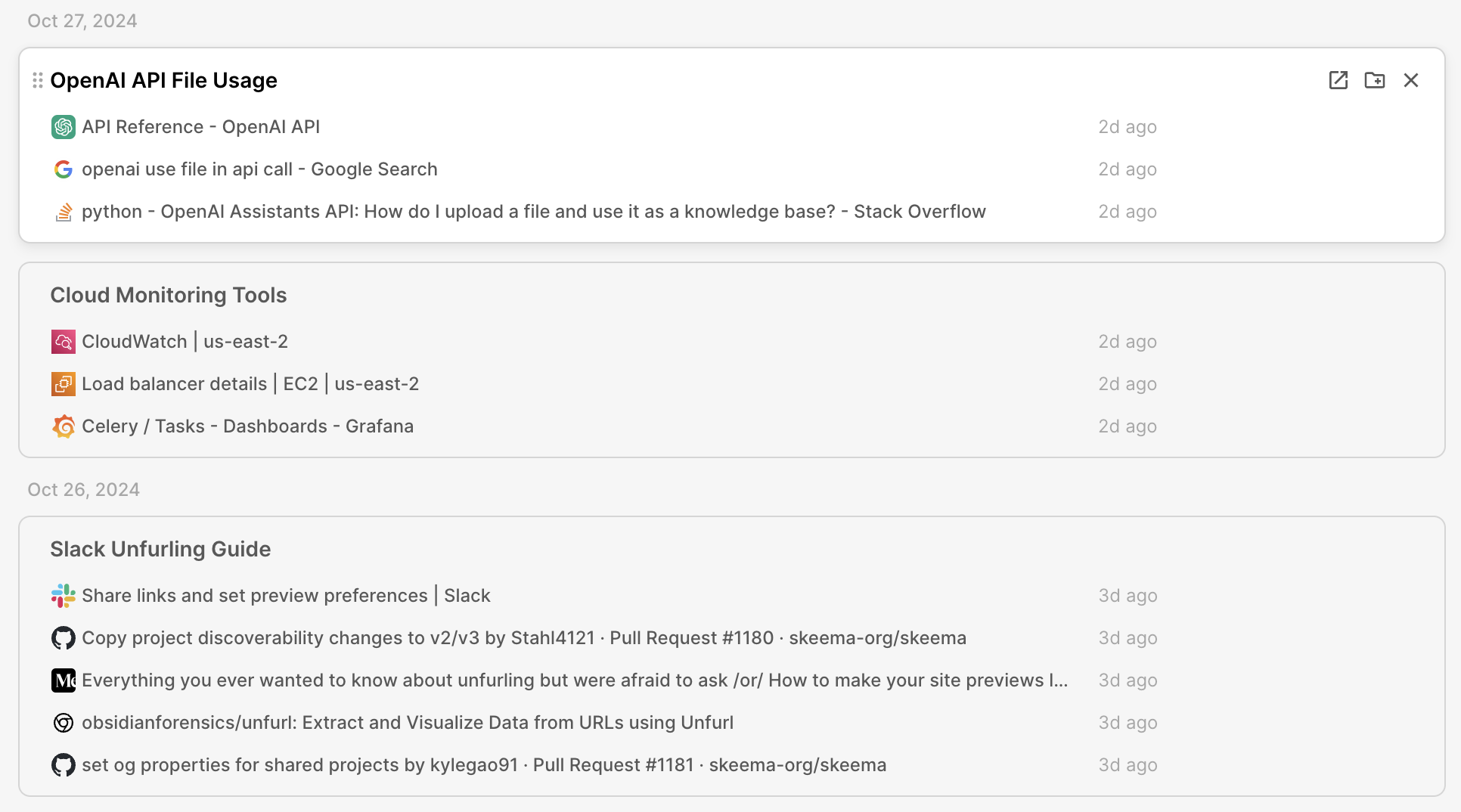How to Group Tabs in Chrome: From Native Tab Groups to Skipper Sessions
If you’ve ever felt overwhelmed by the number of tabs you have open, you’re not alone. An overloaded tab bar can be hard to navigate, and finding the right tab among dozens can feel like hunting for a needle in a haystack. Fortunately, there are tools and techniques available to help you group and organize your tabs, making your browsing experience smoother and more focused. In this post, we’ll explore Chrome’s built-in tab grouping feature and introduce you to Skipper, a powerful solution for managing tabs effectively.
The Problem: Too Many Tabs, Too Little Space
We’ve all been there: you start with just a couple of tabs, and before you know it, your tab bar is overflowing. Navigating through these tabs becomes cumbersome, and it’s easy to lose track of what you were working on. Having too many tabs open not only clutters your workspace but also makes it difficult to focus on a single task.
The Benefits of Grouping Tabs
Grouping tabs is a simple yet powerful way to organize your browsing. Here are some benefits of grouping your tabs:
- Easier to Find Tabs: By grouping related tabs together, you can quickly locate what you need without scanning through a cluttered tab bar.
- Focused Browsing: With organized tabs, you can focus on one group at a time, making it easier to complete tasks without distractions.
- Declutter Your Tab Bar: Instead of having dozens of individual tabs open, grouping them reduces the visible number of tabs, making your workspace feel less chaotic.
How to Group Tabs Using Chrome's Native Tab Group Feature

Chrome offers a built-in tab grouping feature that lets you manually organize your tabs into groups. Here’s how you can do it:
- Right-click on a Tab: Start by right-clicking on the tab you want to group.
- Select "Add Tab to New Group": You’ll see an option to "Add Tab to New Group." Click it.
- Name Your Group and Assign a Color: You can give your tab group a name and assign it a color for easy identification.
- Add More Tabs: To add more tabs to the group, simply drag them into the group or right-click and select "Add Tab to Group."
Chrome also offers automated tab grouping suggestions, which can be triggered manually. When you right-click a tab, you may see a suggestion to group tabs based on similarities—such as tabs from the same website—to help streamline the process.
While Chrome's tab groups are a great way to start organizing, they have some limitations. Let’s dive into how Skipper takes tab management to the next level.
Skipper Sessions: A Smarter Way to Manage Tabs

The Limitations of Chrome's Tab Groups
While Chrome's native tab grouping feature can be helpful, it requires manual effort. You have to create each group yourself, name it, and add tabs manually. Even Chrome's automated grouping suggestions need to be triggered manually, which can be tedious.
Additionally, while grouping tabs can help declutter your workspace, having too many groups in the tab bar still contributes to visual overload. Ultimately, Chrome's solution doesn’t fully address the root of the problem—managing large numbers of tabs without overwhelming the tab bar.
The Advantages of Skipper Sessions
Skipper’s Sessions feature offers a more efficient and automated way to manage your tabs, going beyond what Chrome’s tab groups can do. Here’s how Skipper solves the tab overload problem:
- Automatically Group Tabs: Skipper automatically groups your open tabs, as well as other important tabs from your browsing history. No need to manually create or manage groups—Skipper does it for you.
- Automatic Group Naming: Skipper intelligently names your groups based on their content, so you can easily identify and review them later. This saves time and effort, making it easy to get back on track.
- Ordered by Time: Skipper arranges your groups in chronological order, allowing you to easily return to specific browsing sessions from the past.
- One-Click Launch and Project Persistence: With Skipper, you can launch all tabs in a session with a single click. Skipper also allows you to persist sessions as projects, meaning you can save your browsing sessions and come back to them whenever needed.
Conclusion
Managing an overwhelming number of tabs can be a real productivity killer, but tools like Chrome's tab groups and Skipper Sessions can make a huge difference. While Chrome's native tab groups offer a good starting point for organizing your tabs, Skipper takes it a step further with automated grouping, intelligent naming, and project persistence—making it the ideal solution for anyone looking to streamline their browsing experience.
If you’re tired of dealing with a cluttered tab bar, give Skipper a try and see how it can transform your tab management for the better.


